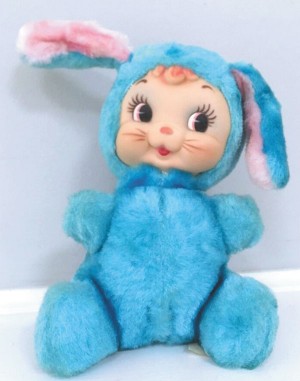The temperatures are climbing, the lilies are starting to bloom and the shopping malls are filling up with life size bunnies and giant colored eggs. There is no doubt about it, Easter is right around the corner.
While they will most likely never reach the popularity level of Christmas collectibles, Easter collectibles are finding an audience and the number of loyal collectors grows each year. Let’s take a look at what “those in the know” are watching for this year.
Baskets — Baskets from the mid 20th Century are gaining in popularity both for display and to use for the little one’s holiday treats from the bunny. It was easy to pick one of these up for $3-$4 a few years ago, but now you will be looking at $20-$30.
Vintage Longaberger baskets have long been a staple with collectors. The easiest to find will be from the early 1990s. Longaberger price points have plummeted in recent years so this is a good time to get their high quality baskets at very low prices!
Some of my favorite baskets are the traditional wicker pieces crafted by Old Order Amish families. These handwoven baskets ranging in size from 12” to 20” wide, run from $50-$100. If you have not yet shopped for your baskets for Easter 2023, your procrastination had paid off! Currently you will find Amish Baskets offered at 20% off at amishbaskets.com.
Ceramic examples from the 1970s and ‘80s are also of interest. You will find these from Lefton, Department 56, Longaberger and Jim Shore for Hallmark, as well as imports from Italy and Portugal. These will range in price from $10 to $150.
Bunnies — Is any Easter basket truly complete without a stuffed bunny? When it comes to collectible vintage bunny rabbits there is no match for those from the Steiff factory. Coveted by collectors for many decades, these can be found for as little as $100 or as much as $500, depending on the age, condition and rarity.
If your tastes run to the less traditional, you might consider Rushton rubber face stuffed bunnies (and chicks). Made in the U.S. during the 1950s and 60s, these adorable creatures, with their flexible faces, are highly collectible.
Online venues like eBay and Etsy are offering vintage Rushton animals in the $750-$900 range. These are mint condition prices on some of the more rare animals. By contrast there are currently bunnies in the $90-$110 range on Poshmark. Still a bit too steep for your budget? It is not uncommon to find Rushton rubber face bunnies and chicks at resale shops and flea markets for $20 or less. So be on the lookout!
Blow molds (a.k.a. light-up lawn art) — New blow molds abound and are often made to look vintage. Check for a barcode, or telltale signs that one has been removed. If one is present your blow mold can be no older than 1970. This is not all bad as anything over 30 years old is considered vintage. Just know that while they may look similar, a 2020 mold should be priced considerably less than one from 1970, so do your homework and know what you are looking at before you buy.
Many of the older blow molds (1940-1970) will be embossed with a maker’s mark and date on the bottom. Other ways to check for age on your blow mold is to determine the material it is made from. Serious collectors watch for those made pre-1950. However, those from the 1950s and 60s are gaining in popularity.
Another way to check for the age of your blow mold is to determine the material it is made from. The three main materials that have been used through the years. Celluloid pieces will be the oldest, followed by Vacucell and then Fiberglass.
Maker’s names to watch for include: Union 1967-2006, Artistic Latex Form Company 1940-1960, Beco products 1950-1960, A J Renzi 1960-1970 and Blinko 1960-1980. In the 1980s most companies began outsourcing production and by the early 1990s all blow molds were being imported from China.
Until next time . . . Linda
Linda Kennett is a retired professional liquidation consultant specializing in down-sizing for seniors and the liquidation of estates.



